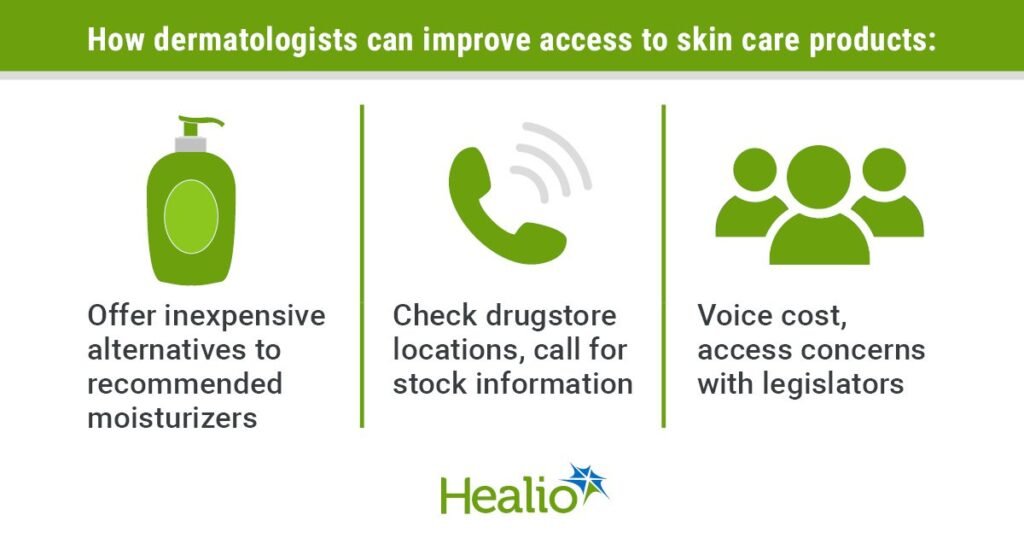Barriers to Atopic Dermatitis Care: The Impact of Cost and Accessibility
Published: August 25, 2025
Reading Time: 3 Minutes
Understanding the Cost of Care
For individuals with atopic dermatitis, securing recommended skin care can be a significant financial burden. A recent study has revealed that dermatologist-recommended products from brands like CeraVe, Cetaphil, and SkinClinical are, on average, twice as expensive as commonly purchased lotions and soaps available at local pharmacies. This stark price difference highlights a critical barrier to effective care for patients, particularly in low-income neighborhoods.
Key Findings
-
Pricing Gap: Dermatologist-recommended skin care products cost significantly more than those available in the general market. For instance:
-
Moisturizing lotions:
- Recommended: $2.73 per ounce
- Popular Brands: $1.13 per ounce
- Liquid body soaps:
- Recommended: $1.29 per ounce
- Popular Brands: $0.35 per ounce
-
- Online Prices: Dermatologist-recommended products can also vary notably in online marketplaces, costing $5.63 per ounce on platforms like Amazon compared to $3.12 per ounce at major retail stores.
The Challenge of Pharmacy Deserts
The study uncovers another layer to these challenges: the existence of pharmacy deserts. These are areas where access to pharmacies is severely limited, forcing patients to travel long distances for medications and essential skin care products.
Key Stats on Pharmacy Accessibility
-
Drugstore Density:
- Low-Income Neighborhoods: 0.26 pharmacies per 10,000 people
- High-Income Neighborhoods: 3.20 pharmacies per 10,000 people
- Operating Hours: Drugstores in lower-income areas often operate fewer hours:
- Chicago: 14.9 hours vs. 19.2 hours in high-income areas
- New York: 13.3 hours vs. 21 hours in high-income areas
"The disparity isn’t just about financial means; it’s about physical accessibility," says researcher Natalia Neha Khosla, emphasizing the urgent need for change.
Suggestions for Improvement
How Healthcare Providers Can Help
-
Awareness and Options: Healthcare providers should recognize the financial barriers their patients face. Rather than solely recommending expensive products, they should also include affordable alternatives.
-
Communicate Effectively: It’s vital to present cheaper options without implying inferiority. For example, Vaseline, often overlooked, is an excellent moisturizer that should not be relegated to the end of the list.
-
Support Local Pharmacies: By checking stock and availability at local pharmacies, physicians can facilitate access to necessary skin care options for low-income patients.
- Advocate for Policy Changes: Medical professionals are encouraged to voice their concerns to legislators about pharmacy distribution inequalities to foster systemic changes.
Conclusion
Access to appropriate skin care for atopic dermatitis is hindered by both cost and location. By acknowledging these barriers and advocating for equitable health care policies, healthcare providers can significantly impact their patients’ quality of life.
For more in-depth information on affordable skincare options and pharmacy accessibility, visit reputable health resources like the National Eczema Association and CDC.
Explore Further
To stay updated on the latest information regarding skincare recommendations and access issues for atopic dermatitis, consider subscribing to health alerts that focus on dermatological care developments.


